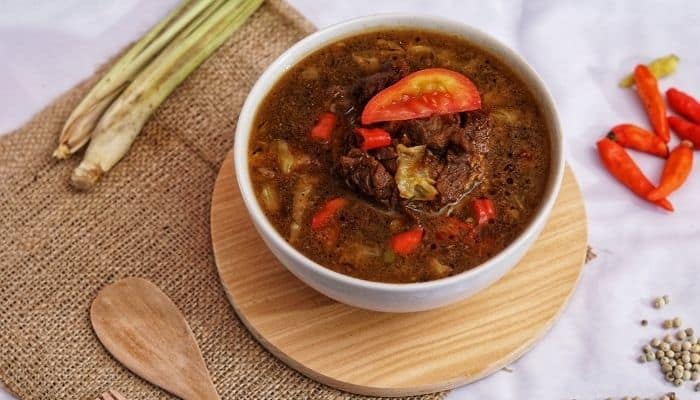The question of what moose tastes like often elicits responses tinged with curiosity and a hint of the unknown. It’s a valid query, considering moose isn’t a staple on most dinner tables. The fascination stems from several factors, including the animal’s impressive size, its wild, untamed habitat, and the relative scarcity of its meat compared to more conventional livestock. Discovering the nuances of its flavor profile unlocks a deeper understanding of this magnificent creature and its place in the ecosystem.
A Baseline Flavor: Robust and Gamey
At its core, moose meat possesses a robust, gamey flavor. This is not your bland, mass-produced beef. It has a distinctive earthiness, a wild quality that sets it apart. The “gamey” descriptor, however, can be misleading. It is often associated with a strong, sometimes unpleasant taste found in poorly handled or older animals. When properly sourced and prepared, moose offers a refined gaminess, more akin to venison than an overpowering musk.
Factors Influencing the Taste
Several key factors contribute to the specific taste of moose meat. Let’s dissect them:
- Diet: What a moose consumes directly impacts the flavor of its flesh. These herbivores primarily feed on leaves, twigs, aquatic plants, and bark. This diet imparts a subtly vegetal note to the meat, a connection to the landscape it inhabits. The variety of flora consumed across different regions contributes to regional variations in taste.
- Age and Sex: Similar to other game animals, younger moose generally have more tender and milder-tasting meat. Older bulls, particularly during the rutting season, can develop a stronger, tougher flavor. This difference underscores the importance of sourcing meat from younger animals or employing specific preparation techniques to mitigate potential toughness and overly pronounced gaminess.
- Season: The time of year the moose is harvested also plays a role. Animals harvested in the fall, after a summer of plentiful forage, tend to have a higher fat content and a richer flavor. Those taken during leaner times of the year might be less flavorful.
- Processing and Handling: This is arguably the most crucial factor. Proper field dressing, rapid cooling, and careful butchering are essential to prevent spoilage and maintain the quality of the meat. Improper handling can lead to bacterial growth and enzymatic activity that negatively impact the flavor. The aging process, where the meat is hung for a period of time under controlled conditions, can also significantly enhance tenderness and flavor.
Textural Considerations
Beyond flavor, texture is an important component of the eating experience. Moose meat is generally lean, meaning it has a lower fat content compared to beef. This leanness contributes to its slightly drier texture, especially when cooked to higher degrees of doneness. However, this can be counteracted through careful cooking methods such as braising, stewing, or marinating. The muscle fibers are relatively coarse, so tenderizing techniques are often employed to improve palatability.
Preparation Techniques: Maximizing Flavor and Tenderness
To truly appreciate the nuanced flavor of moose, appropriate preparation is paramount. Here are some effective methods:
- Marinating: A marinade containing acidic ingredients like vinegar or citrus juice helps to tenderize the meat and infuse it with flavor. Herbs, spices, and aromatic vegetables can further enhance the taste profile.
- Slow Cooking: Braising or stewing allows the tough connective tissues to break down, resulting in a more tender and flavorful dish. The long, slow cooking process also allows the meat to absorb the flavors of the surrounding ingredients.
- Grinding: Ground moose meat is a versatile option that can be used in burgers, sausages, and other dishes. Combining it with a small amount of fat, such as pork fat, can improve its moisture content and flavor.
- Roasting: Roasting is a viable option for tender cuts like the loin or tenderloin. However, it’s crucial to avoid overcooking to prevent the meat from becoming dry. Using a meat thermometer and monitoring the internal temperature is essential.
Comparison to Other Meats
Many describe the flavor of moose as being somewhere between beef and venison, but with its own distinct character. The gaminess is generally milder than that of deer, and the flavor is richer and more complex than that of commercially raised beef. The lean nature of the meat is similar to that of other wild game animals.
The Allure of the Untamed
Ultimately, the appeal of moose meat extends beyond its taste. It represents a connection to the wild, a tangible link to the vast and untamed landscapes where these animals roam. Consuming moose meat can be seen as a sustainable and ethical choice, particularly when sourced from responsibly managed hunts. It’s a culinary experience that offers a glimpse into a different world, a taste of the wilderness itself. The very act of preparing and consuming it becomes a celebration of nature’s bounty and a reminder of the importance of conservation.
The question of what moose tastes like, therefore, is not just a matter of flavor. It’s an inquiry that opens a door to a broader understanding of ecology, sustainability, and the intrinsic value of wild places.









Leave a Comment